Tuberculosis. Later, chest disease, geriatrics
In January 1919 the East Ham Borough Council bought Harts House, a 3-storey mansion which had been rebuilt in 1816, for use as a hospital for patients with pulmonary tuberculosis.
The Harts Sanatorium opened in 1920. The larger rooms of the building had been converted into wards for female patients, while the remaining rooms became administrative offices and staff quarters. Some alterations and adjustments had been made to accommodate the dispensary and the laundry. A hut and six shelters were built to house the male patients, as well as a dining hut to be shared by both sexes.
In 1933 a new pavilion with 32 beds (20 female and 12 male) was built, at the cost of some £12,000. It was officially opened in October by the Mayor of East Ham, Alderman G.H. Manser. The central part contained the X-ray Room and the Sisters' Duty Room, and male and female wards led off each side from this. The Sanatorium then had a complement of 80 beds.
Before anti-tuberculous drugs were available, patients were treated by bed rest, nourishing food and fresh air, often lying on open verandahs for many months. The pavilion was built to be a real suntrap, giving each ward the maximum of sunlight, fresh air and uninterrupted views of the countryside. The wards - each with one or two beds - had no heating, even in winter, and the french windows were left open all the time.
The head gardener's cottage, which had its own garden in a quiet corner of the grounds, was converted into a Night Nurses' Home, to accommodate six nurses, with a bed-sitting room for the Night Sister. The cottage was decorated in cream and brown, with chintz curtains at the windows, with saxe blue linen bedspreads and matching chair covers.
The Sanatorium joined the NHS in 1948, with 98 beds. It was renamed Harts Hospital. In 1949 the war dilapidations were repaired and an operating theatre built for thoracic surgery (mainly thoracoplasty). A well-equipped Occupational Therapy Department was established and Art Therapy was introduced.
In 1959 the Hospital had 100 beds. With the introduction of antibiotics, it began to specialise in non-tuberculous diseases of the chest. At this time the weekly cost of an in-patient was £18 15s 7d (£18 78p), rising to £19 10s (£19.50) the following year.
A new chapel was built during 1960 and 1961.
By 1983 the Hospital had become used mainly for geriatric cases, with 58 beds for such patients, and 20 beds for chest patients.
It closed in 1984, despite a local 'Save Harts' campaign.
Present status (March 2008)
The former main Hospital building, Harts House, is Grade II listed and has become Harts House Nursing Home, a BUPA nursing home with 60 rooms.
Much of the grounds has been redeveloped as Harts Grove, a private estate with 44 dwellings.
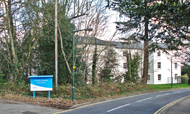
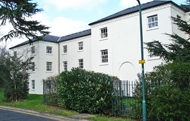
The original Harts House had been demolished and rebuilt in 1816 as a 3-storey stucco-faced mansion.
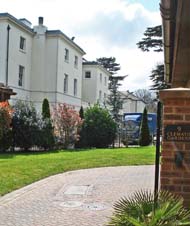
Harts House Nursing Home, as seen from the north.
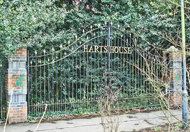
The old main gates remain on the west side.
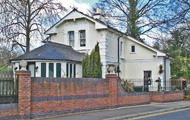

Once the gatehouse at the entrance of Harts House, the Grade II-listed South Lodge is now a private residence.
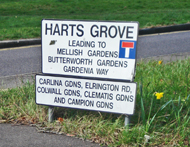

Signage to Harts Grove (left) and the entrance gates to the new housing estate off Snakes Lane West (right).
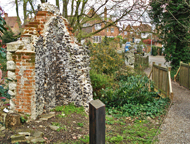
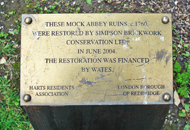
A fake Abbey folly can be found in the grounds.
Eames S 1989 Harts and Flowers. Self-published.
(Author unstated) 1935 Harts Sanatorium. British Journal of Nursing (March), 71.
http://exploringeastlondon.co.uk
www.20thcenturylondon.org.uk
www.british-history.ac.uk
www.bbc.co.uk
www.francisfrith.com
Return to home page